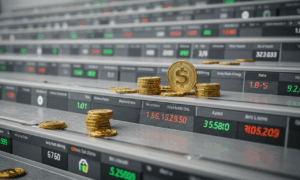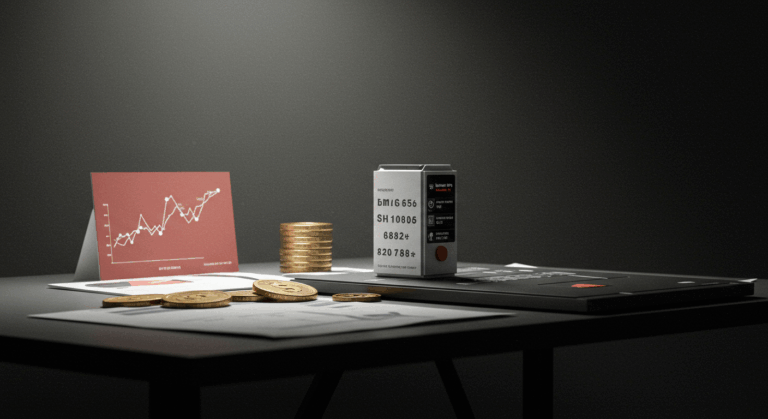Are the golden days of sky-high interest on your savings coming to an end? If you’ve been enjoying the impressive returns on high-yield savings account rates over the past year, you might have noticed a subtle but important shift. After a period of consistent increases, some of the top online banks are beginning to slightly trim their advertised Annual Percentage Yields (APYs). This isn’t a cause for alarm, but it is a significant signal for anyone looking to maximize their cash reserves.
This article will deconstruct what’s happening with these popular savings products, explain the economic forces driving the change, and provide actionable insights on how you can continue to make your money work hard for you in this evolving interest rate environment. We will explore the data, break down the concepts, and help you understand what this means for your personal financial strategy.
The Gentle Descent: What’s Really Happening with Savings Rates?
For the better part of two years, savers have been in a fantastic position. As the central bank worked to combat inflation, interest rates climbed, and online banks competed fiercely for deposits by offering increasingly attractive APYs. It wasn’t uncommon to see rates pushing well above 5.00%, a level not seen in over a decade. This turned the humble savings account into a powerful tool for growing an emergency fund, saving for a down payment, or simply parking cash safely.
However, the tide is beginning to turn. Recently, a handful of prominent online financial institutions have made minor downward adjustments to their APYs. We’re not talking about a drastic plunge; in many cases, the change is a small fraction of a percentage point—for instance, a rate moving from 5.25% down to 5.20%. While seemingly small, these adjustments are the first ripples indicating a potential change in the broader interest rate sea.
To understand this, let’s clarify a key term: APY, or Annual Percentage Yield. This is the real rate of return you earn on your savings in a year, because it includes the effect of compound interest (interest earning interest). A higher APY means your money grows faster. So, even a small dip in the APY means your savings will compound slightly less quickly over time.
The ‘Why’ Behind the Shift: A Look at the Bigger Economic Picture
Why are these banks tapping the brakes now? The answer lies not with the banks themselves, but with the U.S. Federal Reserve, often called the Fed. The Fed sets a key interest rate called the federal funds rate, which is the rate at which banks lend to each other overnight. This rate serves as a benchmark that influences all other interest rates in the economy, from mortgages and credit cards to, you guessed it, savings accounts.
When the Fed raises its rate to cool down the economy and fight inflation, banks typically follow suit by offering higher APYs on savings accounts to attract more customer deposits. This is what we’ve experienced over the past couple of years.
Now, economic indicators are suggesting that inflation is cooling, and the market widely anticipates that the Fed’s next move will be to cut rates, possibly later this year. Forward-looking banks are not waiting for the official announcement. They are proactively adjusting their savings account rates downward in anticipation of this future policy shift. They are essentially getting ahead of the curve, preparing for a lower-rate environment.

What This Means for Your Savings Strategy
A slight dip in HYSA rates is a signal to be proactive, not to panic. The rates on these financial products are still incredibly high compared to historical averages and vastly superior to the negligible interest offered by traditional brick-and-mortar bank savings accounts. Here’s how you can adapt your strategy:
- Don’t Settle, Shop Around: This is the perfect time to compare your options. While some banks are lowering rates, others may hold steady to attract new customers. Spend 30 minutes researching the top HYSAs from different online banks and credit unions. Ensure the institution is FDIC or NCUA insured, which protects your deposits up to $250,000.
- Consider Locking In a Rate with a CD: If you have a portion of savings that you won’t need to access for a set period (e.g., six months, one year, or longer), a Certificate of Deposit (CD) might be an excellent choice. CDs allow you to lock in today’s high interest rates for the entire term of the deposit. This protects you from any future rate drops. For example, if you lock in a 1-year CD at 5.15% APY, you are guaranteed that return for the full year, even if HYSA rates fall to 4.50% during that time.
- Review Your Financial Goals: Use this as an opportunity to assess your cash savings. Is your emergency fund fully funded with 3-6 months of living expenses? Are you saving for a short-term goal like a vacation or a car? An HYSA remains one of the best vehicles for these purposes due to its combination of safety, liquidity, and solid returns. Reviewing your overall savings strategy periodically is always a wise move.
The Broader Context: Staying Agile in Your Financial Journey
This subtle shift in savings rates is a perfect example of why staying informed is crucial for your financial health. The economic landscape is constantly changing, and the products available to you change with it. What was the best strategy six months ago might need a slight tweak today. By understanding the forces that influence the rates on different financial products, you can make smarter, more confident decisions with your money.
The key takeaway is that high-yield savings accounts remain a cornerstone of a sound financial plan. They are still the premier destination for your emergency fund and short-term savings. The current news simply serves as a reminder to be an active participant in your finances—to compare, to question, and to adjust your strategy as needed to ensure your money is always positioned to work its hardest for you.
Disclaimer: This article is for informational and educational purposes only. It should not be considered financial or investment advice. You should consult with a qualified financial professional before making any financial decisions.
Frequently Asked Questions (FAQ)
Should I move my money out of my high-yield savings account now that rates might be dropping?
Not necessarily. Even with slight decreases, the APYs on high-yield savings accounts are still vastly superior to those of traditional savings accounts, which often pay close to zero. The most important thing is to ensure your current account offers a competitive rate. If your bank’s rate has dropped significantly below the market leaders, it may be worth switching to another institution. However, the product itself remains one of the best places for liquid savings you need to keep safe and accessible.
How is a Certificate of Deposit (CD) different from a high-yield savings account?
Both are safe, insured savings products, but they differ in flexibility and rate structure. A high-yield savings account (HYSA) offers a variable interest rate that can change at any time, but it provides complete liquidity, meaning you can withdraw your money whenever you need it without penalty. A Certificate of Deposit (CD) offers a fixed interest rate for a specific term (e.g., 1 year). In exchange for this guaranteed rate, you agree to leave your money deposited for the entire term. Withdrawing early typically results in a penalty. A CD is ideal for money you know you won’t need to touch, as it protects you from falling interest rates.





